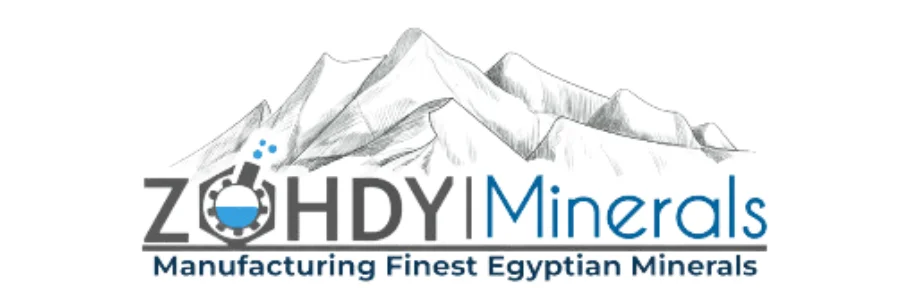Calcium Carbonate (CaCO₃) has a wide and comprehensive range of uses in the field of construction and building. For instance, it has long been used as an industrial mineral in construction products and applications such as mortars, plaster, concrete, floor tiles, brickwork, stone masonry, and pool plasters—from ancient times up to the present day. In modern construction, calcium carbonate has been further developed and incorporated in road building, concrete blocks, and brick bonding.
CALCICARB KA is the trade name of natural products used with white marble, produced in Kainach/Graz, Austria. Here, compact marble is extracted from open-pit mines, then washed, dried, and classified automatically under strictly monitored and optimal conditions.
Raw calcium carbonate remains a fundamental component in the construction and building industry due to its wide availability, low cost, and versatile properties. Being a natural compound found in limestone, marble, and chalk, it serves as a primary ingredient in many construction materials including cement, mortar, asphalt, and roofing tiles.
What are the Uses of Calcium Carbonate in Construction ?
Calcium carbonate plays a vital and essential role in construction because of its physical and chemical properties, making it highly versatile and economically valuable. Being abundant in nature as limestone, marble, and chalk, it is used in a wide variety of construction applications—both as a base raw material and as an additive.
-
Cement Production
Calcium carbonate is heated to produce quicklime (CaO), a key ingredient in clinker that is later combined with other elements to manufacture Portland cement. This process enhances compressive strength and durability in concrete structures, making it one of the strongest examples of calcium carbonate’s importance in construction.
-
Asphalt Applications
Calcium carbonate improves the hardness and stability of asphalt mixtures, helping resist deformation and cracking under extreme temperatures.
-
Filler Material
It is also used as a filler in composites, reducing production costs without compromising performance. Its benefits include UV resistance, durability against weathering, fire resistance, and—thanks to its high brightness and fine particle size—it is ideal for aesthetic and functional building materials such as wall panels, ceiling tiles, and precast elements.
-
Durability and Maintenance
Its low abrasiveness reduces equipment wear and maintenance costs, while its consistent quality and abundant supply make it a preferred mineral in major infrastructure projects worldwide.
Main Applications of Calcium Carbonate in Construction:
-
Cement
-
The main component in Portland cement, calcium carbonate reacts with aluminum oxide and iron oxide in lime to form solid compounds that bind sand and gravel together.
-
It improves cement strength, structural integrity, and water resistance.
-
-
Tiles
-
In tile manufacturing, calcium carbonate increases strength and durability while lowering overall production costs.
-
-
Sealants
-
Used in water-sealing materials for construction, swimming pools, and other applications to prevent leakage.
-
-
Insulation Materials
-
Plays a key role in adhesives and sealants for construction, especially in floor and ceramic tile adhesives, as well as in stone adhesives.
-
Our factory is a primary supplier to major national and international adhesive companies.
-
Importance of Using Calcium Carbonate in Construction
-
Strength & Resistance
Enhances the bonding and cohesion of materials like cement, bricks, and concrete, increasing resistance to wear and damage.
-
Hardness & Durability
Its high hardness makes it ideal for applications requiring pressure and abrasion resistance such as foundations, walls, and floors.
-
Thermal & Acoustic Insulation
Provides insulation against heat and sound, improving energy efficiency and comfort inside buildings.
-
Flexibility
Some types offer flexibility, making them suitable for paints and adhesives.
-
Cost-effectiveness
Being abundant and natural, calcium carbonate is an affordable building material.
Key Construction Uses of Calcium Carbonate
-
Cement & Lime Production
-
Heated in kilns to produce quicklime (CaO), then used in Portland cement manufacturing.
-
Provides strength and durability to cement.
-
-
Concrete
-
Added as fine powder or crushed stone in concrete mixtures.
-
Improves texture, reduces porosity, and increases long-term strength.
-
-
Finishing Materials (Plaster & Paints)
-
Used as a filler in wall putties, plaster, and paints for smoother finishes and better adhesion.
-
-
Paving & Infrastructure
-
Crushed limestone is used as a base layer under roads or in asphalt mixtures to increase stability.
-
-
Building Stone & Decoration
-
Marble and limestone are widely used in facades, flooring, and decorative works due to their aesthetic appeal and durability.
-
-
Soil Stabilization in Construction
-
Powdered calcium carbonate is applied to clay or acidic soils at construction sites, improving ground stability before building.
-
Advantages of Using Calcium Carbonate in Construction
-
Widely available and easy to extract.
-
Cost-effective compared to alternatives.
-
Enhances durability and mechanical strength of materials.
-
Relatively eco-friendly when extracted and processed responsibly.






